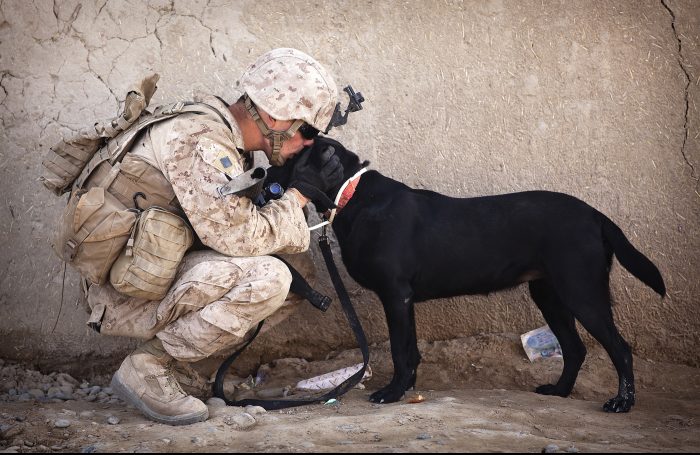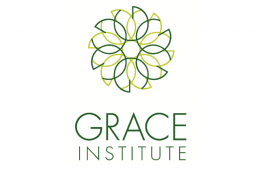Introduction
Workforce Education legislation, including the recent passing of the Workforce Innovation and Opportunity Act (WIOA) has had a focus on creating educational opportunities for underserved and marginalized populations. One such group is U.S. veterans; in addition to WIOA, they receive benefits from legislation geared towards providing education and training opportunities for those who served on active duty from 1944, onwards. The resulting programs are a mixture of government, non-profit and private run initiatives that vary greatly in content and quality. Each of these entities may serve different demographics or deliver services under a specific section of the law, but generally have the same end goal. They exist to provide transitional educational opportunities that allow veterans to complete higher education or vocational training, keeping in mind their unique and challenging experiences.
Legislation
The Servicemen’s Readjustment Act (later known as the GI Bill), was originally created to provide benefits to veterans returning from World War II. The bill has been expanded during subsequent wars, including the Vietnam War. In 2008, prompted by the 9/11 terrorist attacks on the United States, this bill was revised and amended to extend those benefits to any person who served on active duty for 90 or more days on or after September 10, 2001. In addition to compensation, pensions, and life insurance, these benefits included a robust plan for aiding education and vocational rehabilitation and transition services for members that fall into this category. The bill outlines the types of programs and institutions that are qualified to provide services under the new laws and compliance is monitored and enforced by the U.S. Department of Veterans Affairs (VA).
 According to a report published by the Department of Veteran Affairs, during 2015, there were 1,016,664 beneficiaries who received education benefits sponsored under the current GI Bill and all its iterations. This includes all veterans who served in active duty from 1944 to present day. Taking a look at Table 1, you’ll see a breakdown of the educational beneficiaries (veterans and their survivors and/or dependents), the programs under which they are eligible and the level of education they are undertaking. There are six educational and training programs set up under the GI Bill:
According to a report published by the Department of Veteran Affairs, during 2015, there were 1,016,664 beneficiaries who received education benefits sponsored under the current GI Bill and all its iterations. This includes all veterans who served in active duty from 1944 to present day. Taking a look at Table 1, you’ll see a breakdown of the educational beneficiaries (veterans and their survivors and/or dependents), the programs under which they are eligible and the level of education they are undertaking. There are six educational and training programs set up under the GI Bill:
- POST 9/11: Post-9/11 Veterans Educational Assistance Program (Post-9/11 GI Bill)
- MGIB-AD: All-Volunteer Force Educational Assistance Program (Montgomery GI Bill – Active Duty)
- MGIB-SR: Educational Assistance for Members of the Selected Reserve (Montgomery GI Bill – Selected Reserve)
- REAP: Reserve Educational Assistance Program
- DEA: Survivors and Dependents Educational Assistance
- VEAP: Post-Vietnam Era Veterans Educational Assistance Program
In 2015 there were approximately 452,000 newly enrolled participants in an educational program under this legislation. Despite the total number of beneficiaries, over one million, the total number of educational beneficiaries decreased by 7% between fiscal years 2014 and 2015. The report does not indicate the cause of this decrease, nor whether this is the intended result of the legislation. This is to say, there is no information on the impact of the US withdrawing from Iraq in 2011 and whether we should expect to see a consistent decline or increase in the number of beneficiaries each year. The report indicates a surge in beneficiaries between 2012 and 2013 and a steady decrease beginning in 2013. The question, then, is whether the decrease in participants can be attributed to less active duty service-members being eligible for the program or perhaps a correlation between marketing and outreach with the decline of enrollments. There has also not been any update to the GI Bill to account for the fact that we are no longer considered ‘at war’. This means that all service-members currently serving 90 or more days will be eligible for these benefits.
Motivators and Barriers to Educational Success
According to the 2009 study by Ackerman, DiRamio and Garza Mitchell, titled Transitions: Combat Veterans as College Student, feedback from participants indicated that “along with patriotism, the promise of educational benefits was a primary motivator. Eight participants noted the need for financial support to attend college (pg 6)”. This implies that those on active duty, those thinking about enlisting and those that have left the military understand the value in both the GI Bill and higher education/vocational training. The financial assistance is a gateway to these opportunities that were previously out of reach due to any number of reasons, including socioeconomic standing.
However, based on the resources provided on the VA’s website, mental health services are available but not mandated in order for veterans to acclimate to life and work outside of the military. There is also no literature about the counseling process when joining the military. This begs the question whether candidates understand the potential struggles veterans will face once returning to civilian life. According to a 2012 study by Ellison et al. “war related trauma and consequent impairments can hinder educational attainment among veterans with disabilities including those with post-traumatic stress disorder (PTSD)”. The study conducted by Ackerman et al. (2009) shares the view of one participant in particular who “noted that the killing and survival skills learned in the military were not applicable in classroom settings, implying that a relearning of leadership skills was also necessary (pg 7)”. Limited information is available about programs that address these issues and works with veterans, specifically, to map their skills to applicable ones in the workforce.
Additionally, the same study found that “the barriers to education centered on four codes, two of which were especially relevant to young adults: educational planning and reintegration challenges”. This qualitative study found that the lack of preparation and educational experience of participants was a contributing factor in failure to complete higher education programs. Overall program administration is lacking, leading to difficulties in gaining access to available resources. This is in line with the study done by Ellison et al. (2012), which states:
“The Veterans Administration, which handles educational and medical benefits, is not an easy bureaucracy to understand, although some negotiated it well. We learned, too, that not all campuses have functioning programs in place to assist veterans who have become students. Then there were the challenges of fitting in, of just being a student (pg 9)”
This is a frequent piece of feedback that has been heard both from veterans as well as news outlets and oversight committees. In their 2016 article titled Career Transitions of Student Veterans Ghosh and Fouad suggest that “Although student veterans’ enrollment has increased, there is limited information about how the transition from military service to college life influences the career choices of student veterans (pg 99)”. They also found that “According to ACE (2011), military experiences may translate into academic credit at most universities. However, if student veterans are not aware of this and other resources and benefits, they may lack a sense of confidence in making the transition to college (pg 106)”. It is clear from both the literature review and the information available on the VA’s website that there is a disconnect between the services being provided and the audience they are meant to serve.
Utilizing Current Legislation to Create Tailored Programs and Environments
In that vein, it seems apparent that the responsibility to create successful programs generally resides with the educational institution, which would explain the variation in quality of services received. Research conducted by Lokken, Pfeffer, McAuley, & Strong in 2009 shows that institutions like St Cloud State University in Minnesota is making conscious efforts to make their campus better suit the needs of the target demographic, saying, “veteran-friendly refers to marked efforts made by individual campuses to identify and remove barriers to the educational goals of veterans, to create smooth transitions from military life to college life (pg 45)”. In July of 2006, the MDVA–Higher Education Veterans Programs split the state into 6 regions and assigned a coordinator responsible for compliance and implementation. They also assigned a Program Director to oversee the program and coordinate efforts. This move, along with increased funding for military programs saw a total of forty-one campuses running veterans resource centers. The program has received positive reviews and increased the number of veterans receiving necessary services related to education and career. Although this model will not fit all states – especially considering population density in areas like Texas, NY and LA – it does put forth an alternative way of managing resources to make services more accessible. It also demonstrates the importance of consistency, coordination, and oversight in maintaining value in government funded program.
Conclusion
There is limited literature regarding the transition of veterans into the higher education and vocational institutions, how they are programs and people are supported once they begin a program or long term results of initiatives. However, the topic warrants further investigation. Research into the impact of holistic career transitioning services in higher education and vocational training can be a valuable tool for program planners looking for ways to empower veterans in the classroom and the workplace. Education institutions and local government bodies would benefit greatly from a deeper understanding of the GI Bill, it’s intended implementation and the way it is presently influencing the structure of program offerings. Finally, research into and program planning focused on bridging the gap between skills acquired and new career paths would likely be valuable to participants, especially those who enlisted at a fairly young age.
References
Ackerman, R., DiRamio, D., & Garza Mitchell, R.L. (2009). Transitions: Combat Veterans as College Students. New Directions for Student Services (Wiley InterScience). 24, 5-14. doi: 10.1002/ss.311
Bound, J., & Turner, S. (2002). Going to War and Going to College: Did World War II and the G.I. Bill Increase Educational Attainment for Returning Veterans?. Journal of Labor Economics, 20, 784-815. doi: 0734-306X/2002/2004-0003$10.00
Bokhour, B.G., Drebing, C., Ellison, M.L., Smelson, D., Corrigan, P.W., Najavits, L.M., Torres Stone, R.A., Vessella, J.M. (2012). Supporting the Education Goals of Post-9/11 Veterans with Self-Reported PTSD Symptoms: A Needs Assessment. Psychiatric Rehabilitation Journal, 35, 209–217. doi: 10.2975/35.3.2012.209.217
Ghosh, A.& Fouad, N.A. (2016). Career Transitions of Student Veterans. Journal of Career Assessment, 24, 99-111. doi: 10.1177/1069072714568752
Lokken, J.M, Pfeffer, D.S, McAuley, J., & Strong, C. (2009). A Statewide Approach to Creating Veteran-Friendly Campuses. New Directions for Student Services (Wiley InterScience). 126, 45-54. doi: 10.1002/ss.315
Loughran, J. (2014). Professionally Developing as a Teacher Educator. The International Journal of Teacher Education, 26, 271-283. doi: 10.1177/0022487114533386




